As summer drew to a close, much of the Bay Area new music community gathered at 21 Grand for our annual ritual of live musical performance, socializing and tasty barbecued treats known as the Annual Transbay Skronkathon. The Skronkathon is also a benefit for the Transbay Creative Music Calendar, a free print publication that serves the creative music community here with event listings and articles (including several from this site).
I had been planning my own part in this ritual since, well, last year’s Skronkathon when Polly Moller discovered that my CatSynth review had been reposted in “spammogrified form” by another website. That became the basis for this years performance, which featured a reading of the spammogrified text and the inexplicable repeated phrase as a dominate. Another thing that was different this year was our “live tweeting team” of myself, Polly Moller and Tom Duff. It sort of happened spontaneously. It seems a bit difficult to search for the past #skonkathon posts via Twitter, but I have collected them all and will sprinkle a few throughout this article. (Look for the @ signs.)

[Live tweeting. Photo by Suki O’kane. (Click to enlarge.)]
In fact, one of Tom’s live tweets described the duo of Ann O’Rourke and Carlos Jennings as “a disco remix of Berio’s Visage”. I am sorry I did not arrive earlier – it’s hard to pass up something with a description like that.

Rachel Wood-Rome. Photo by Michael Zelner.
I did arrive in time to see Rachel Wood-Rome’s performance for solo horn. Her melodic performance seemed like a snippet from a 19th or early 20th century concerto, minus the orchestra. However, in listening I started to fill in an orchestral part myself. She then presented a sing-along of a piece with lyrics by Max Gutmann. It included this refrain song with a minor melody in 5/8 time:
Our librarian is Miss Marion
she is scary an’ very old
pause and pity us
’cause she’s hideous
very hairy an’ likes to scold
Wood-Rome was followed by Respectable Citizen. Usually the duo of Bruce Bennet and Michael Zbyszynski, they were actually a trio on this occasion with the guest appearance of Jeff Ridenour on violone. For those not familiar with the violone, it is a large bowed stringed instrument with frets, closer to the viols used in Renaissance and baroque music than to the modern orchestral string family. The set started off softly with flute, picking on the violone, and stringy ethereal sounds.

[Respectable Citizen. Photo by Michael Zelner. (Click to enlarge.)]
The next piece featured more noise and distortion, with scratching sounds on the violone and a particularly interesting moment with the keyboard resonated together with squeaking sounds from the saxophone. There was also a section of “loungy free jazz” – which is certainly fun for me – mixed with some FM-like sounds.
as a dominate
Respectable Citizen was followed T.T.F.W.’z. If I had to describe their performance, it would be “punk skronking”, with loud, fast, driving rhythms and noisy squawks, squeaks and long strings of notes. And they had their own fan section doing 1990s-style jumping-up-and-down dancing. Given the loudness, I opted to enjoy their set from the alley, and even relive a bit of my youth by briefly demonstrating this form of dance to some of my musical colleagues.
The next set was one I was quite looking forward to: a duo of Matt Davignon with “a table full of junk” (as Tom Duff delicately described it) and Eric Glick Rieman on prepared electric piano. I am quite fond of electric piano (e.g., Fender Rhodes) and interested in prepared acoustic piano, but this was first time I had seen and heard the two concepts together.

[The prepared electric piano. (Click to enlarge.)]
The sounds of the Rieman’s instrument and Matt’s drum machines and effects ranged from high and tinny, to scratchy, glitchy, or sometimes more bell-like. The piano certainly made some unique sounds: boings. bell-like scratching and other effects that made the purely electronic sounds seem tame by comparison On occasion, the instrument’s piano-like quality would stand out, and one could hear the tines that are characteristic of electric pianos. At other times it was more aggressive and percussive. Rieman’s playing style brought out this quality, and I found myself watching the mechanics of the instrument as I was listening to the music. There was moment that seemed like film music, with long piano notes set against “squishy sounds” from Matt Davignon’s electronic effects. And then a sound that reminded me of marbles. There were anxious harmonies, and rhythms on top of rhythms in samples.

[Matt Davignon and Eric Glick Reiman. Photo by Michael Zelner. (Click to enlarge.)]
Next up was blipvert (aka Will Northlich-Redmond). Standing behind a table with an Alesis Air and a Pioneer DJ controller, he launched into an intense and frenetic blast of music and choreography (@TomDuff He doesn’t *act* like a guy in cargo pants & a black teeshirt). The electronics were all controlled by his voice or other live sounds and gestures, so when he shouted or snapped or spun around or fell and the floor only to spring back up moments later, it would trigger a new sound or change in the sonic process. The hits and squeaks and thuds and sample loops and retro-1980s synthesizer sounds were perfectly timed to his over-the-top theatrics and choreography. It is clear that he spent a lot of time practicing and perfecting this. And it was definitely a fun performance to watch! Just when it seemed he was running out of energy and about to collapse from exhaustion, he got back up with a shout and launched into the next one. It is difficult to describe in words, but you can get a flavor from his videos from other performances. And the videos do not give the full sense of the energy.

[Blipvert. Shared by @TomDuff on twitter. (Click to see original post.)]
Blipvert was followed by Blowout Preventer (@TomDuff fresh from their gig at Deepwater Horizon), a clarinet quartet featuring Philip Greenlief, Dan Plonsey, Ceylan Yagmur and Michael Zelner. I am always intrigued by clarinet ensembles, having played the instrument in the past and written a piece for clarinet quartet. This performance began with whaling sounds that sounded like sirens, and then suddenly became quiet and harmonic and even contrapuntal. An intricate rhythm emerged in the sum of the four parts – even though each part seemed relatively simple, the interaction was complex. There was also a section with long growling tones, followed by more harmonic sounds; scraping of mouthpieces set against multiphonics; and a waltz that was interrupted.
Next up was Kattt and Ron, a duo of Kattt Atchley on Ron Heglin on vocals with electronics. Their set began with long electronic drones with beating patterns. Heglin began his vocal incantations in this backdrop, with his words soft and purposefully hard to discern. The drone, which was slowly but continually changing, had a generally minor harmony, but with inharmonic tones and continued beating patterns. The overall effect was very meditative. There were some odd facial expressions as the vocals became more noisy. By this time, both Atchley and Heglin were performing with voice, gradually becoming more harmonic and moving between unisons and perfect intervals. I was able to hear the voices both as a single unit and as individuals, the male and female contrast. The sounds gradually faded to a single beating tone at the end with a sprinkle of more percussive vocalizations.

[Kattt Atchley and Ron Heglin. Photo by Michael Zelner.]
As always happens at Skronkathon, I miss the set right before my own as I set up and prepare. In this, the set featured Bob Marsh on classical guitar, CJ Borosque on pedals an turntable, and Sandra Yolles on electronic percussion.
This is as good a time to mention the work of art that served as a backdrop for the performances, perhaps the most beautiful that I have seen at 21 Grand. The piece is by Dina Rubiolo and is titled 13th Ave. It features 8500 35mm slides arranged into the shape of a building facade and backlit. (@pollymoller Stage area has a striking backdrop: a proscenium arch made of backlit photographic slides.)
It was then time for our performance. I recited the entirety of the spammogrified text (you can see a copy here), while Polly performed the refrain “as a dominate” as it appeared within the text, complete with props and choreography. It was interesting to both read (and hear) how my text was affected by the various translators and other processes that may have been used. Certain phrases kept popping out, such as “plum sonorous” and “plum decorous” – I think “plum” was the retranslated equivalent of “rather” or “quite”, which I often use in my writing. Soft instruments or musical passes were re-worded as “sissified”, and several people seemed to enjoy the phrase “sissified trombone” – and some people also had fun hearing their own names of those of their friends and colleagues appear in the middle of the barely comprehensible narrative.

[Amar and Polly. Photo by Michael Zelner. (Click to enlarge.)]
In terms of technology and instrumental accompaniment, I kept things rather sparse. I opted to only use the iPad, running the Smule Magic Piano and the a granular synthesis app called Curtis. As source material, I used some pre-recorded passes of myself reciting the text.
(@TomDuff Decourous as a notwithstanding. #skronkathon(Amar and Polly.). As a dominate)
We were followed by RTD3, with Doug Carrol on cello, Tom Nunn on his invented instruments, Ron Heglin on trombone and voice. They are always a fun group to watch. (@catsynth Scraping sounds percussive cello trombone and vocal blah blah. Some particularly interesting moments included all three instruments making percussive scraping sounds, Carrol performing the cello like a guitar and also upside-down, and a moment whether the tone of bowed cello and the skatch box and the two blended together. There were some very soft moments, such as soft staccato trombone tones, and a low drone-like rumble from the ensemble. There was also a series of sounds that conjured up the image of a scampering mouse.
Next was a trio of Matt Ingalls on clarinet, Tom Scandura on percussion, and Thomas Dimuzio on Moog guitar. This was the first time I had heard a Moog guitar in a live performance setting. Knowing the musicians involved, I knew in advance this was going to be a loud set (@catsynth Scandura, Ingalls and Dimuzio trio will definitely not be sissified). The music started off with a dramatic film-like drone, with the clarinet coming though on top. The drums gradually got louder and started to match. From this point, there was mixture of fast runs and loud notes, some sections that sounded like 1960s free jazz and others that seemed to follow a more Middle Eastern scale. At some point, both the clarinet and the electronic guitar become more inharmonic and the drums got wilder and louder. Then suddenly a beat entered into the music, a bit of a slow rock shuffle or rock ballad overlaid with dark ambient guitar sounds. Matt Ingalls switched the violin at one point during the set. As the music started to feel more relaxed, it suddenly get loud again with FM-like sounds and acoustic drum, and then it got “super loud”. Even within the loudness, one could hear interesting details, such as a latin beat and a phrygian scale, and a really loud high-pitched squeak.
The contrast to the next set, a duo of Philip Greenlief and David Boyce, was rather dramatic. Although it was full of fast virtuosic runs, it was relatively quiet and spacious. There were moments where the seemed to go into unison, or where the rhythm seemed to stand still, before returning to the fast and complex runs. There were also a variety of interesting breathing sounds, mouthpiece effects, and other extended techniques. At one point, it sounded like a bird or a creature that was “laughing”.

[Greenlief and Boyce in front of Dina Rubiolo’s artowrk. (Click to visit original post.)]
The combination of the relative calm of the set and the time of the evening made this one that truly took advantage of the backdrop provided by Rubiolo’s artwork. I featured this image of Greenlief and Boyce in front of it in a previous Wordless Wednesday.
They were followed by another duo, Gino Robair and John Shiurba under the name G / J. Robair was billed as playing “voltage made painful”, and incorporated a Blippo Box, as well as a drum machine, effects boxes and a device for pre-recorded samples into the mix. Shiurba played guitar with a variety of extended techniques, including using a superball to excite the strings. The were lots of fast cuts and cartoonish moments, with boinks and slaps and machine noises. The Blippo Box had a liquidy organic sound that contrasted with finger-picking on the guitar. At one point in the performance, Robair set in motion a rather funky rhythm loop that sounded for a bit, then came in and out and decayed into grains of sound (@catsynth I want Gino to keep that funky rhythm background going longer. As a dominate.). There were moments that were a bit more aggressive, with loud piercing sounds, but then others that were…well, “plum sonorous” and featured minor harmonies.

[G / J in front of the wall of beauty. Photo shared on twitter by @TomDuff. (Click to visit original post.)]
Next up was Wormses, a trio of Jacob Felix Heule (percussion), Tony Dryer (bass) and Bobby Adams (electronics). The set started with a low rumble and hum, with the bass soon coming on top of scratchy electronic sounds and Heule playing a cymbal against a bass drum. The music became more anxious and busy over time, with some electronic insect-like sounds coming in above the other parts. Then all of a sudden things got very soft. A rhythm emerged in the background, but barely audible behind the bass and cymbal. As the set continued, a walking bass line came out of nowhere, then lots of swells and glissandi. Gradually, the music built back up to a rather loud level, a couple sounds that were like clipping and feedback, and ultimately ending with the sounding of the bass drum.
I think that was where I walked out to the alley for another break. There was lasagna!
The final set featured Ghost in the House, with Karen Stackpole (percussion), Tom Nunn (invented musical instruments), David Michalak (lap-steel guitar) and Andrew Voigt (who was sitting in for Kyle Bruckman on winds). I had heard them previously at the Wind Moon Concert back in April, and their sound is quite ethereal and airy, even for the percussion and lap-steel guitar. As with the previous performance, they began with a procession, of elemental instruments. The room was dark, except for the light from the 35mm slides in front. The performers then took their places for the remainder of the performance. The sounds were quite subtle at times, slightly minor, and sometimes like old film or radio soundtracks with eerie wind sounds mixed in. The metal instruments (primarily Stackpole’s gongs on Nunn’s instruments) served as a foundation, with the sounds of the wind instruments floating above. In addition to the long atonal sounds, there were moments with high squeaks and east-Asian harmonies and timbres. In the final piece, Stackpole played on an interesting metal-tube instrument and also used a vinyl record as percussion. Michalak’s lap-steel guitar featured prominently in this piece as well. The overall effect sounded electronic, even though the ensemble was purely acoustic instruments. The night concluded with the ensembles recessional from the room, still appropriately dark.
(@casynth #skonkathon concludes. Good night)
As a dominate

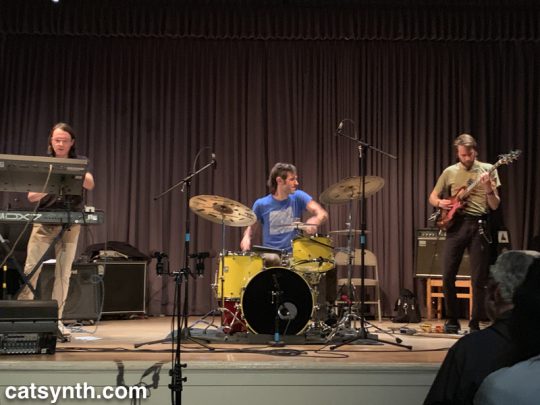
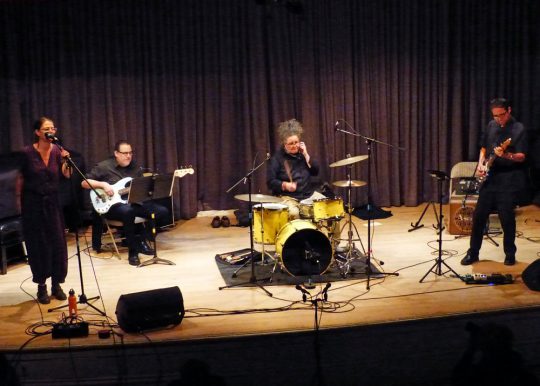
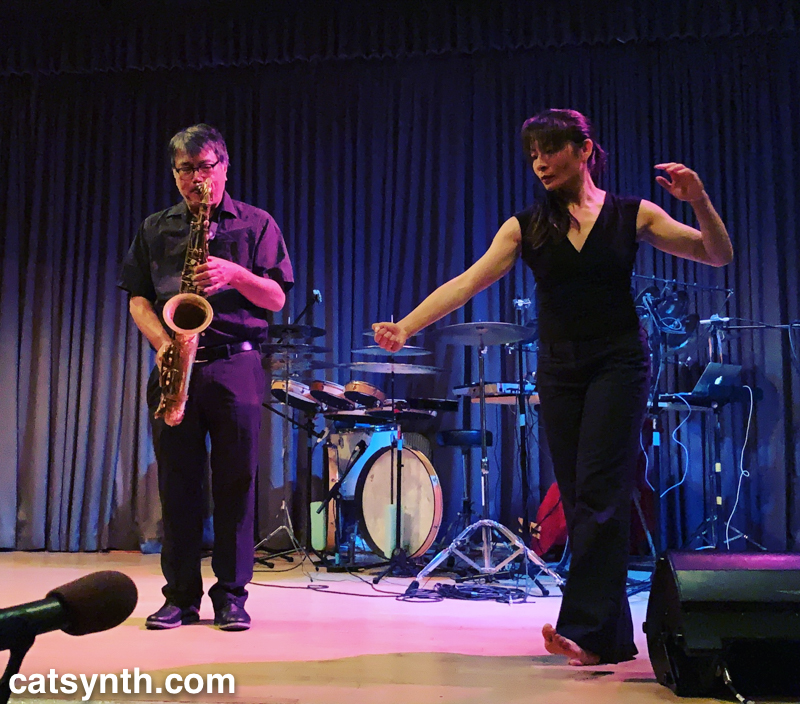
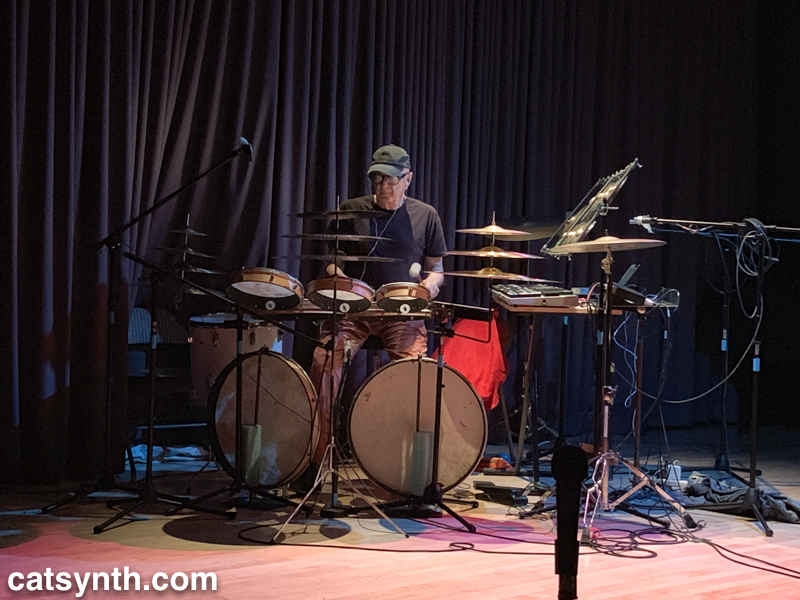
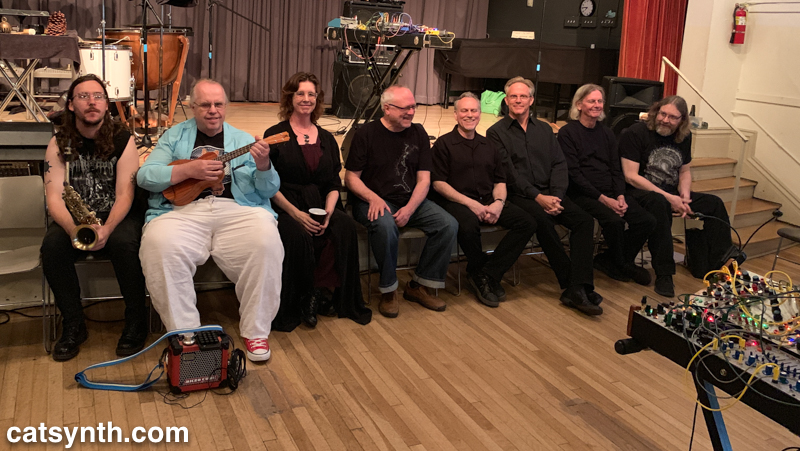
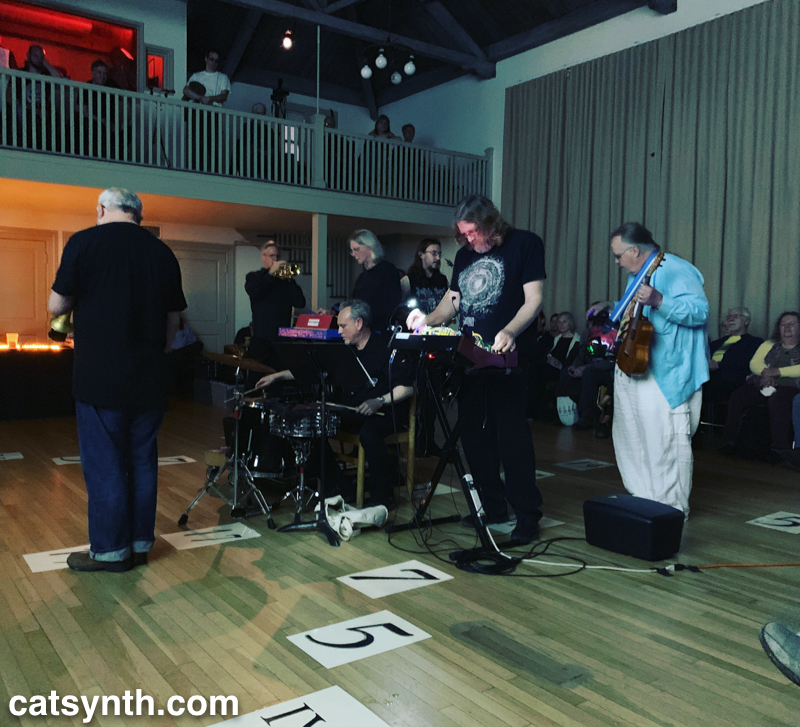
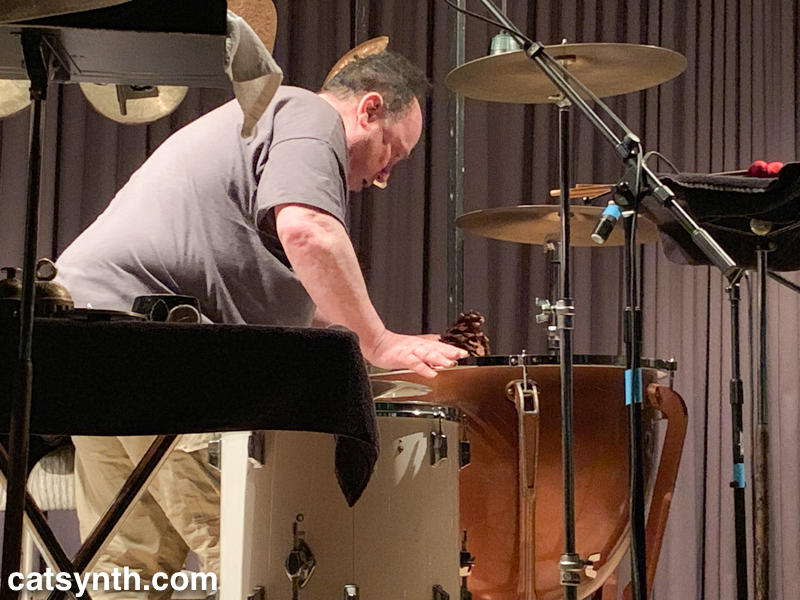
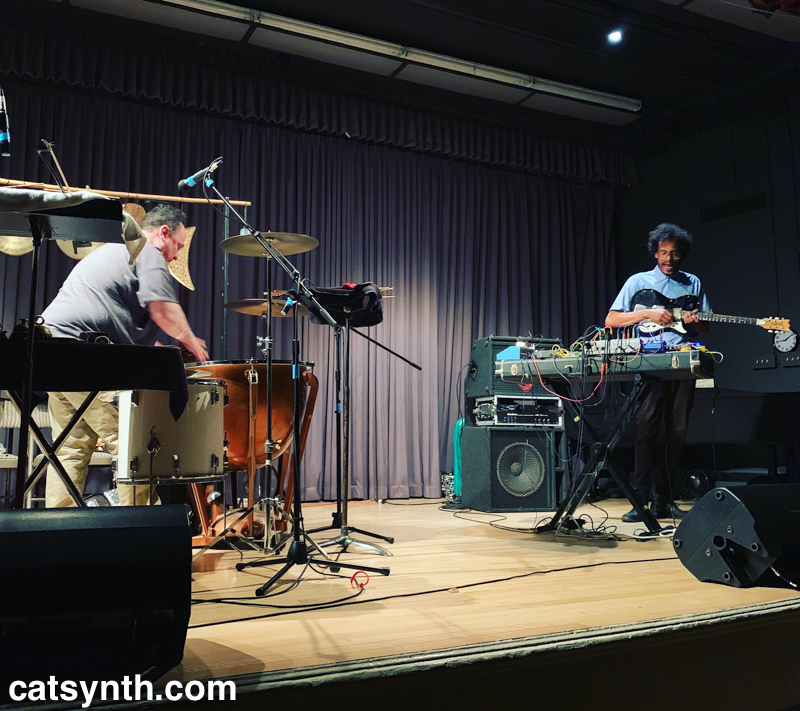
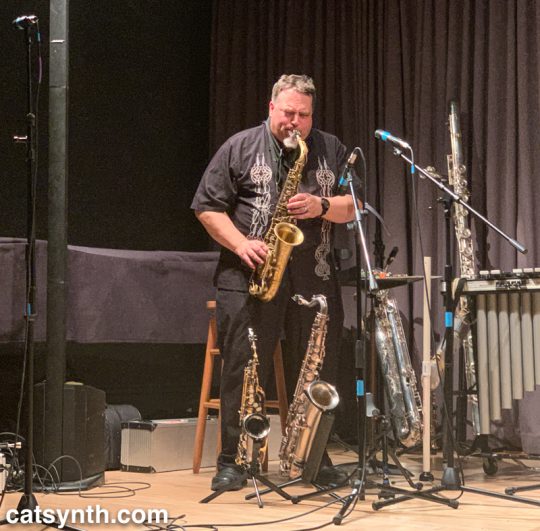
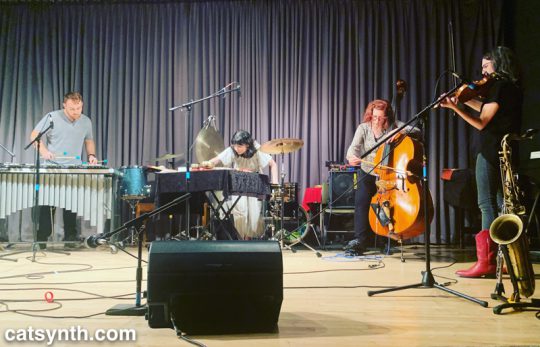
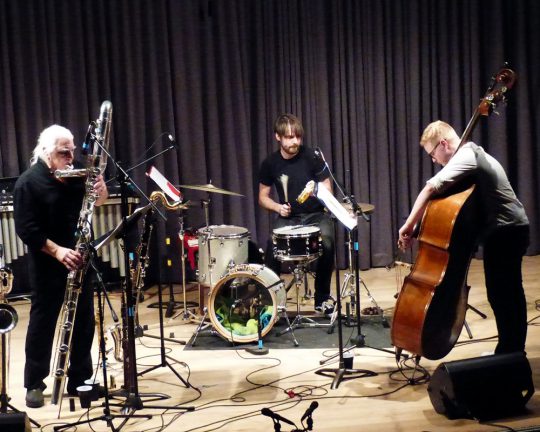

































 This September was the 10th anniversary of the
This September was the 10th anniversary of the 












